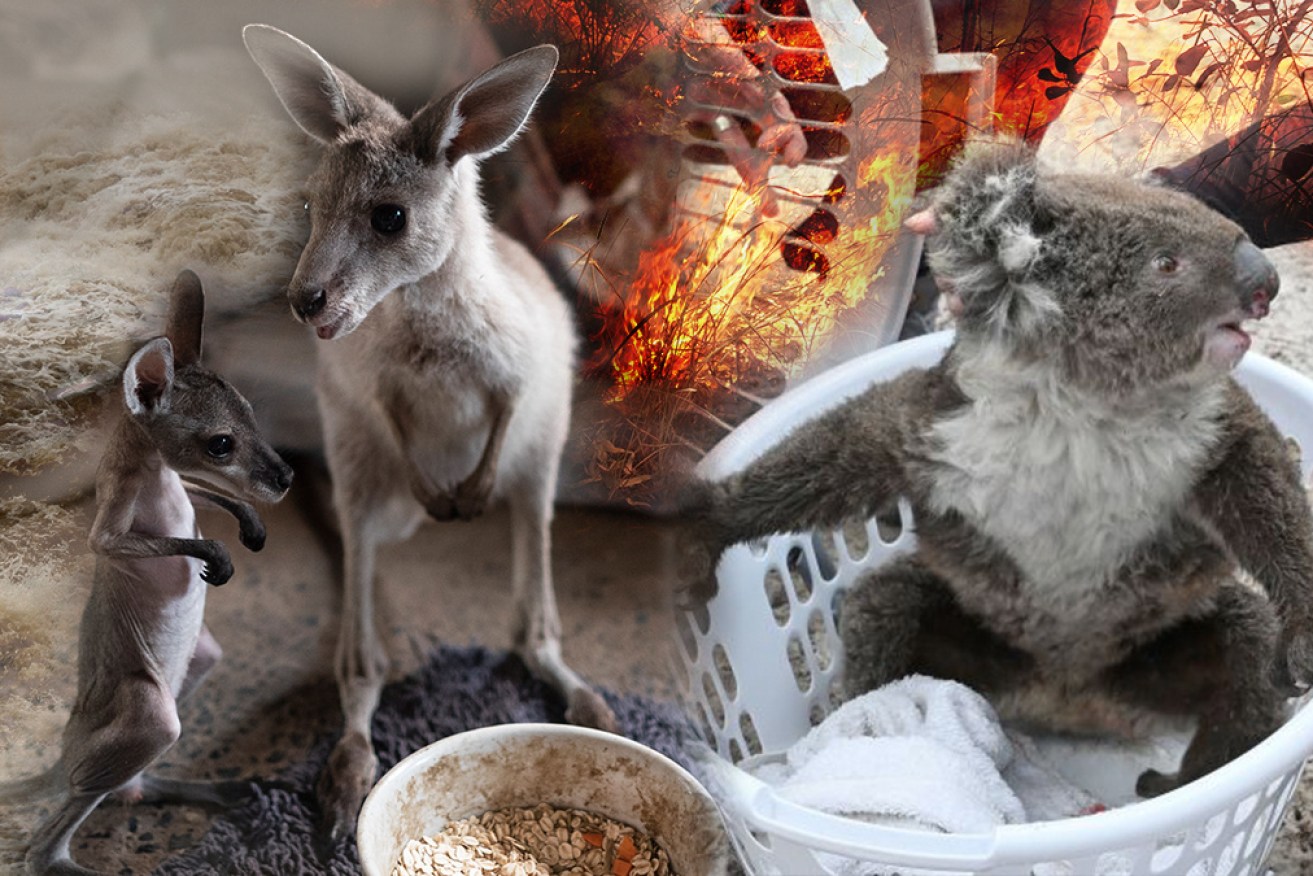Wildlife will need food drops for a year to survive in razed bushland


Animals need more food drops to survive in bushfire-ravaged areas, say carers. Photo: TND
Surviving animals in bushfire-razed areas are at serious risk of starvation and will need to rely on food drops for at least a year, wildlife volunteers have warned.
So far this season, Australia’s ferocious bushfires have killed an estimated 1.25 billion animals across the country, with some species pushed to the brink of extinction.
More than 800 million animals are estimated to have been killed in New South Wales alone.

A wombat being nursed at a sanctuary on NSW’s east coast. Photo: Sonja Elwood
But that high death toll is certain to grow as thousands of injured and homeless animals suffer food shortages as a result of the destruction of 10 million hectares of bush habitat.
Volunteer wildlife organisation Wildcare Queanbeyan has been delivering monthly food drops in NSW following a fire in Tallaganda National Park that burnt thousands of hectares of forest.
The group’s president Belinda Hogarth-Boyd said there were “huge numbers of animals facing starvation” in the region, which borders the bushfire-ravaged ACT.
“This is a marathon, not a sprint,” Ms Hogarth-Boyd said.
“We’ll be support-feeding the wildlife for probably the next 12 months.”
So far, the organisation has been distributing hay, fruit, vegetables, pellets and extra native vegetation to 40 rural properties bordering the national park.
Homeowners are backing the volunteers.
Long-time Forbes Creek resident Peter Smith said he was pleased to see wallabies, wombats, birds and other wildlife eagerly eating the food drops.
“Hopefully this will tide them over through the difficult time until we get enough rain to get some regrowth,” Mr Smith said.
Sadly, despite the best efforts of volunteers, there are still thousands more animals languishing in razed bushland around the nation.

Makayla Iannuzzo, from Vets Beyond Borders, nursing an injured joey. Photo: Sonja Elwood
In many cases, authorities have deemed the fire grounds too dangerous and banned wildlife volunteers from accessing them.
International wildlife carers on NSW’s east coast have worked around some of these restrictions by flying heat-sensitive drones over hectares of scorched bushland in search of injured animals.
Last month, the NSW government delivered thousands of kilograms of carrots and sweet potato to endangered brush-tailed rock-wallabies in fire-affected areas.
“The wallabies typically survive the fire itself, but are then left stranded with limited natural food as the fire takes out the vegetation around their rocky habitat,” Environment Minister Matt Kean said.

The NPWS delivered carrots and sweet potato to brush-tailed rock-wallabies. Photo: NSW DPIE
In Victoria, dozens of rare and threatened species are also reeling from the fire emergency.
The Victorian government has arranged wildlife triage units and assessment teams at fire grounds, as well as targeted food drops from the air and on the ground.
The World Wildlife Fund has also committed more than $1.7 million to support projects focused on immediate wildlife rescue, care and recovery efforts across all fire-affected states and territories.
To donate to WWF, click here.








